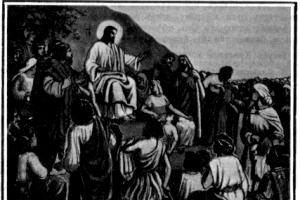Carbon monoxide(CO) is a chemical that causes acute poisoning. It is dangerous to health and life. Negative influence carbon monoxide on the human body is based on the transformation of the blood composition and damage to the respiratory system. The consequences of poisoning are very severe and often result in death.
Physical and chemical properties of CO (carbon monoxide)
Carbon monoxide is a colorless gaseous substance, without a specific odor, lighter in density than air. Highly flammable.
The substance is very toxic. Because it has no smell. Fatal cases of poisoning are recorded frequently. CO is formed during the combustion of any material and is concentrated in the air. Once in the body, the substance interacts with hemoglobin and forms a strong complex - carboxyhemoglobin. This compound disrupts the physiological functions of the blood and blocks the transport of oxygen to the tissues. As a result of oxygen starvation, biochemical processes are disrupted.
When a person inhales polluted air, carbon monoxide enters chemical reaction with hemoglobin faster than oxygen. With each breath, the concentration of carboxyhemoglobin increases.
Signs of poisoning appear when hemoglobin is replaced:
- 20% – mild degree of general intoxication;
- 30% – moderate poisoning;
- 40-50% – loss of consciousness;
- 60-70% is a lethal dose.
The higher the CO content in the air, the faster it accumulates in the body. The lethal dose is 0.1% in inhaled air (death occurs within an hour). Carbon monoxide is a toxic substance that belongs to the 2nd and 3rd hazard classes (medium and high). In enclosed spaces, signs of intoxication appear faster than in open areas. In a state of physical activity, the time of human poisoning is reduced; in a state of rest, the degree of poisoning increases slowly. This is due to the fact that stress on the body increases the breathing rate and lung volume.
Conditions under which a person can get carbon monoxide poisoning
Most often, CO poisoning occurs in enclosed spaces during domestic fires. The risk group includes residents of private houses with gas or stove heating. An improperly designed air exchange system (ventilation, draft in chimneys) contributes to the accumulation of substances in the room.
IN industrial purposes Carbon monoxide is used for the synthesis of organic compounds. In case of non-compliance and gross violation of safety regulations, the risk of poisoning among employees increases.
Carbon monoxide is a component of automobile exhaust. Therefore, you can be poisoned by the substance in a garage with insufficient ventilation, poor ventilation, in long tunnels, or during a long stay near highways and congested roads.
You can get poisoned at home if the stove dampers are not closed, or if there is a leak of lighting gas, which is used in heating systems private buildings. Cases of intoxication due to hookah abuse have been recorded.
Symptoms of carbon monoxide poisoning
The effect of carbon monoxide on the human body depends on the level of its concentration in the air. A mild degree of damage to the body quickly becomes moderate and is manifested by suffocation and headache. The nervous system is the first to react to a lack of oxygen. Signs of her defeat:
- pain in the cranial cavity of a pulsating nature, pounding in the temples, dizziness, nausea not associated with food intake, single vomiting;
- visual disturbances, lacrimation;
- mental instability, irritability, emotional outbursts, impaired coordination of movements, especially fine motor skills, memory instability, auditory and visual hallucinations;
- decreased mental and physical activity, shortness of breath, chest pain with any movement;
- heart rate increases, blood pressure rises slightly;
- the skin and mucous membranes acquire a bright scarlet color.
Carbon monoxide poisoning during pregnancy, even at low concentrations, leads to the death of the embryo during pregnancy. early stages and fetus in the 2nd and 3rd trimester. Mild intoxication is deadly for people with severe heart and vascular diseases.
In case of severe poisoning, the victim develops drowsiness, apathy, constant tinnitus, and headaches become more intense. Due to damage to the nasal mucosa, a profuse runny nose appears. Nausea intensifies, vomiting becomes more frequent. Motor muscles are affected by paralysis due to ataxia - destabilization of coordination motor activity. Breathing becomes frequent and shallow. The person is conscious, but it is confused.
The impact of carbon monoxide on the human body at high concentrations is characterized by the following symptoms, which indicates extremely severe poisoning:
- fainting, unconsciousness;
- breathing is periodic, cyclical, rare shallow breaths gradually become more frequent and become deep;
- heart rhythms are depressed, pulse is weak;
- convulsions, seizures;
- pupils react poorly to light;
- sudden bluish discoloration of the skin;
- involuntary urination and uncontrolled bowel movements;
- lack of reflexes, state of deep coma;
- cessation of breathing and heartbeat, death.
First aid to the victim
Before the ambulance arrives, it is important to properly provide the person with first aid. When entering the room, open the door wide and support it with any heavy object so that it does not close. Then you should stop the supply of carbon monoxide - close the damper on the stove, turn off the heating system. After this, open all the windows in the room. The air flow will instantly reduce the concentration of carbon monoxide.
Take the victim outside as quickly as possible, free him from restrictive clothing, and cover him with a warm blanket or rug. If the weather is clear outside, it is better to place the person in the sun rather than in the shade. Direct Sun rays destroy carboxyhemoglobin.
If the victim is not breathing, begin resuscitation measures - cardiac massage and artificial respiration.
Medical assistance for CO poisoning
 Upon arrival of the ambulance, the patient is immediately connected to an oxygen bag. The O2 supply must be continuous and powerful for 3 hours. An emergency doctor is required to administer acyzol to a person, an antidote for carbon monoxide poisoning.
Upon arrival of the ambulance, the patient is immediately connected to an oxygen bag. The O2 supply must be continuous and powerful for 3 hours. An emergency doctor is required to administer acyzol to a person, an antidote for carbon monoxide poisoning.
Pharmacological action of the drug:
- prevents the formation of the carboxyhemoglobin complex;
- promotes the binding of oxygen to hemoglobin;
- stabilizes oxygen delivery to tissues;
- reduces body intoxication;
- biotransforms carboxyhemoglobin and removes it from the bloodstream;
- increases stability internal organs to oxygen starvation, reducing the tissue need for O2;
- replenishes zinc deficiency.
Acizol as an antidote for carbon monoxide is administered intramuscularly in a dose of 1 ml. The maximum daily dose should not exceed 4 ml. The course of treatment with the drug is from 7 to 10 days. Side effects no antidote has been identified. Sometimes a painful infiltrate may occur in the area where the drug was administered. In case of an overdose, the patient experiences a metallic taste in the mouth, nausea, and headaches.
To stimulate breathing, the nervous and vascular systems, caffeine is prescribed subcutaneously. Action of the drug:
- enhances heart function;
- dilates blood vessels;
- increases heart rate;
- promotes urine separation;
- eliminates headaches.
Carboxylase (an enzyme) helps partially remove carbon monoxide from the body. It promotes the rupture of the carboxyhemoglobin complex and the cleavage of CO molecules from hemoglobin. The drug is administered intravenously.
Complications
Carbon monoxide is a highly toxic substance. Therefore, human poisoning in rare cases goes away without leaving a trace. Intoxication of the body leads to consequences of varying severity.
Possible complications:

- damage to the sense organs - hearing, vision;
- trophic skin lesions - swelling, blisters, necrosis;
- circulatory disorders in the brain;
- hemorrhages in the space between the meninges and the web;
- numerous toxic nerve lesions;
- signs of cerebral edema;
- myocardial infarction;
- myoglobinuric nephrosis - acute kidney failure, which develops with toxic damage to the organ;
- severe pneumonia - inflammation of the lungs that occurs in a patient during a long stay in a coma.
People who have suffered CO poisoning often develop late complications, months or even years later. The psyche and nervous system suffer the most.
Patients complain of memory loss, decreased concentration and level of intelligence. The person does not perceive well new information, loses the ability to learn. Psychosis gradually develops - a person’s reaction and mental activity contradicts reality. The perception of the surrounding world is disrupted, behavior is disorganized.
Long-term consequences of defeat nervous system:
- development of blindness;
- paralysis;
- dysfunction of the large and small pelvic organs;
- parkinsonism.
Over time, such pathologies appear on the part of the heart;

- cardiac asthma;
- inflammation of the membranes of the heart;
- angina pectoris;
- myocardial infarction.
From the respiratory system - frequent outbreaks of pneumonia.
To reduce the likelihood of severe complications, it is important to provide emergency medical care and administer an antidote in a timely manner.
The health effects of carbon monoxide always contribute to serious operational failure internal systems and organs. In most cases it leads to the death of a person. Therefore, caution in the operation of heating devices should be paramount. The rules of occupational safety and health must not be neglected. In rooms where there is a risk of increasing the concentration of carbon monoxide in the air, you need to install a special sensor to monitor the situation. This device runs on batteries or mains and does not require special maintenance. When a toxic substance increases in the air, it sounds a sound signal.
Carbon monoxide Chemical substance, polluting the atmosphere and negatively affecting the human body.
The properties of carbon monoxide are very insidious. It has neither color nor odor, which makes it a very dangerous substance. Carbon monoxide mixing with air is practically invisible, which is why a person notices a deterioration in his condition only after poisoning has occurred. Very often, the poisoned person is already in such a state that he cannot help himself without outside intervention.
Carbon monoxide formation
There are plenty of factors for the formation of CO in the air. These are homemade electric heaters, kitchen gas stoves, gas water heater in the bathroom, wood stoves, chemical and coke plants, forest fires, exhaust gases from internal combustion engines, peat fires.

Harm
The first symptoms of carbon monoxide poisoning may appear seven hours after a person has been in a contaminated room.
They are usually expressed in a number of ailments:
- Nausea, vomiting
- Attacks of shortness of breath
- Dizziness
- Loss of consciousness
- Weakness
- Tinnitus, deafness
- Neuropsychiatric imbalance
- Nervous overexcitement
- Hallucinations
- Kidney failure
- Pulmonary edema
- Heartbeat
- Cardiac asthma
- Myocardial infarction
- Coma
When carbon monoxide enters the human body, it forms a stable compound with hemoglobin and blocks the natural circulation of oxygen in the blood and organs, which can lead to death. Death occurs mainly due to arrhythmia or acute heart failure.

If the carbon monoxide that caused the poisoning contained toxic combustion products, then CO entering the bloodstream can damage the nervous system. If carbon monoxide was formed as a result of burning peat bogs, then such smoke contains toxic nitrogen oxides and phenols, prolonged inhalation of which leads to general intoxication of the body.
Consequences of carbon monoxide poisoning
Carbon monoxide poisoning can cause serious and in some cases irreparable harm to health. The consequences of carbon monoxide poisoning may not begin to bother you immediately, but after a few weeks and lead to such deviations as:
- Visual impairment
- Slow thinking
- Absent-mindedness
- Heart problems
- Nervous diseases
- Memory problems
- Aggravation chronic diseases
- Oncology development
The longer a victim with manifested symptoms delays visiting a doctor, the higher the likelihood of missing the opportunity for cure.
Fortunately, the vast majority of patients affected by carbon monoxide recover completely and experience no negative health consequences in the future.
Benefit
Carbon monoxide has no beneficial properties.
Help for carbon monoxide poisoning
If you find a person who has been poisoned by carbon monoxide, immediately call an ambulance and provide him with first aid:
- Take the victim out of the room or open windows and doors for ventilation.
- Rub all the limbs and body of the victim well
- Place a cold compress on the victim's body and chest
- If the victim is conscious, give him warm tea
If the person with carbon monoxide poisoning is unconscious, follow these rules:
- Call ambulance
- Take the person outside or open all doors and windows for a large influx of fresh air.
- Try to bring the person to consciousness by giving him a sniff of ammonia.
- Place cold compresses on the victim's head and chest
- If you are not breathing, perform mouth-to-mouth artificial respiration until the ambulance arrives.
- If there is no pulse, perform external cardiac massage until the ambulance arrives.
Remember, when performing artificial respiration, it is important not to be poisoned by carbon monoxide exhaled by the victim. Inhale into the victim’s mouth through gauze or a handkerchief moistened with water, and during the victim’s passive exhalation, move your face to the side.
Preventing carbon monoxide poisoning
To avoid CO poisoning, follow basic safety precautions that will allow you to protect yourself from accidental carbon monoxide poisoning:
- Do not use a gas or kerosene burner to heat an enclosed space.
- Do not close the fireplace or stove damper unless the fire or coals are completely extinguished.
- Never use a wood-burning, gas grill or smoker indoors
- Monitor the condition of the gas stove, water heater or other gas equipment
- Check the condition of chimneys, chimneys and ventilation hatches
- Don't ride in a closed truck bed
- Turn off the car in the garage, even if the gate is open
- Don't sleep in a car with the engine running
- Don't sleep in the garage
- Do not repair your car while intoxicated

Compliance with the rules described above will prevent you from becoming a victim of carbon monoxide poisoning and will reduce the risk of threat to your life.
Carbon monoxide has no odor and is not visible to the eye. It is produced when carbon-containing substances burn. Carbon monoxide poisoning is often fatal. There are known cases of mass deaths that occur during explosions. Carbon monoxide impairs the flow of oxygen to tissues and organs. If the concentration dangerous substance increases, irreversible changes and death occur.
ICD 10 code
According to the International Classification of Diseases (ICD 10), when carbon monoxide accumulates in the body, code T58 is assigned.
Causes
Carbon monoxide is more easily incorporated into the respiratory protein, displacing oxygen. It is not immediately possible to detect the effects of carbon monoxide on the body. Intoxication develops when the concentration of toxic carboxyhemoglobin is more than 10%. The time spent in gas-contaminated conditions is of great importance. When a person breathes smoke long time, brain tissue begins to starve.
The pathogenesis of the disease considers not only the manifestations of the influence of carbon monoxide, but also the causes of poisoning. Thus, a large proportion of people are poisoned in the garage when the car is running, the stove is being used incorrectly, the heating and exhaust systems are broken, geysers and etc.
You can get poisoned in a car if carbon monoxide accumulates in the body. The danger of intoxication lies in the fact that the injured person does not immediately realize that he has been exposed to toxic effects. The mechanism of intoxication involves the development of tissue hypoxia. The pathological condition in which shortness of breath and migraine pain appear is called second-degree poisoning. Interruptions in the functioning of the brain and cardiovascular system accompany chronic carbon monoxide poisoning. In severe cases of poisoning, when the CO content reaches 0.3% or higher, the person loses consciousness and dies.
The toxic component provokes conditions that occur with other forms of intoxication: weakness, apathy. If victims inhaled carbon monoxide in a sauna, steam room or bathhouse, they may confuse such manifestations with the relaxing effects of heat. The likelihood of CO intoxication is higher at high air temperatures; people with heart disease, who are more susceptible to poisoning, are also at risk.
Often, poisoning occurs in an apartment due to a fire that ignites. The fire spreads rapidly, the amount of carbon monoxide increases sharply. In this case, a significant number of people are exposed to poisoning: apartment residents, neighbors.
Symptoms
In case of prolonged exposure to gas, nerve structures are destroyed, tissue hypoxia, convulsions, and confusion may develop. Symptoms of carbon monoxide poisoning are determined by the amount of carbon monoxide in the air. So, early signs of carbon monoxide poisoning are:
In the syncope form of intoxication, there is pallor of the skin, a drop in blood pressure, nausea, and heart rhythm disturbances. Signs of severe carbon monoxide poisoning include loss of consciousness, convulsions and coma.
With prolonged exposure to carbon monoxide, symptoms increase. Manifestations of intoxication have their own characteristics. First there is euphoria and excitement. Then the clinical picture of developing carbon monoxide poisoning is aggravated due to loss of orientation and memory loss. Impaired motor skills may occur due to neurological disorders. With moderate intoxication, the level of CO in the body reaches 40-50%, and collapse is possible.
Symptoms in a child who has inhaled carbon monoxide develop faster - children only need to stay in a gas-filled room for 3-5 minutes to experience hypoxia of brain tissue. The child is delirious skin have a bright color, reminiscent of cadaveric spots in color.
First aid
How to efficiently administer first aid for carbon monoxide poisoning? The burnt person is taken out of the room into the air. In case of a quick response, it will be possible to bring the poisoned person to his senses at the scene of the incident and avoid possible complications intoxication. It is impossible to evacuate victims without a protective suit, in as a last resort, hold their breath and carry people out. Call an ambulance immediately.
In case of mild carbon monoxide poisoning, the victim's collar and cuffs are unbuttoned and air flow to the tissues is ensured. In case of carbon monoxide poisoning, it is necessary, first of all, to get away from the source of intoxication. The further procedure includes:
- bring the burnt person to consciousness with the help of ammonia;
- give caffeine-containing drinks: tea, coffee;
- rub your limbs to stimulate blood circulation;
- give an alkaline drink to neutralize CO;
- apply a heating pad to your limbs.
First aid for carbon monoxide poisoning in case of suffocation requires mouth-to-mouth breathing. First of all, the head is slightly thrown back, the jaw is extended, and the nose is pinched with the hand. Two artificial entries are made without violent action, but with sufficient intensity. In the absence of cardiac activity, first aid involves chest compressions and artificial respiration. If the above measures do not produce results, cardiopulmonary resuscitation must be repeated. If the poisoned person is unconscious, he should be placed on his side.
Providing first aid for clinical carbon monoxide poisoning requires a lot of effort. It is difficult for a beginner to master the PMP algorithm without preparation, so emergency assistance in case of carbon monoxide poisoning, trust professionals, especially during pregnancy and childhood. First aid rules require the participation of a physician in resuscitation efforts.
What to do with someone who is burned after carbon monoxide poisoning? IN living conditions To help the victim, you can do the following: give more fluids, take 1 tsp. activated carbon every hour, diluting the tablets in oatmeal broth.
Treatment
To make a diagnosis, a comprehensive examination is necessary. The gas composition of the mixture and acid-base balance are determined, and the hemoglobin level is assessed. Treatment and rehabilitation after carbon monoxide poisoning are determined by the intensity of the toxic effect.
Often, in case of severe carbon monoxide poisoning, an antidote is used - pure oxygen. It can hardly be called an antidote, but it is the only substance that the body needs in case of acute carbon monoxide poisoning. After resuscitation measures, an oxygen mask is connected. In the hospital, complex treatment is carried out to eliminate the consequences of hypoxia.
Based on the degree of poisoning, carbon monoxide detoxification is chosen. Intensive therapy in case of carbon monoxide poisoning, it involves the administration of the medication “Azitsol” and a glucose solution, and the intake of absorbent tablets. In case of acute poisoning, oxygen inhalation is prescribed, the mucous membranes are moistened, and in case of hypotension, an ephedrine solution is administered.
Ascorbic acid is especially useful for patients. At the recovery stage, it is prescribed healthy eating with a high content of antioxidants. Vitamins B1 and B6 are prescribed intravenously. For painful attacks that occur due to burns, analgin is administered subcutaneously or intravenously. Treatment methods such as hemodialysis and lymphatic drainage are designed to revive oppressed cells.
Complications and consequences
The inevitable outcome of poisoning in the absence medical care- respiratory arrest and death. If help for poisoning was provided late, coma develops. Complicating factors also lead to death: the presence of heart and vascular diseases, previous heart attacks, strokes, and brain pathologies. Intoxication caused by the huge release of carbon monoxide into the air during explosions and fires is fatal.
Negative consequences of long-term carbon monoxide poisoning include interruptions in the functioning of the central and peripheral nervous system, headaches, and ophthalmological disorders. Hypoxia has a detrimental effect on brain activity and causes complications such as amnesia, neuritis, and cognitive decline. Long-term consequences of long-term carbon monoxide poisoning include pneumonia and myocarditis.
Prevention
To prevent poisoning, do not forget about prevention. Mandatory precautions include checking gas equipment and ventilation systems in the building. Car enthusiasts should remember that after entering the garage, the engine is turned off. Repair work Do not do this when the engine is running.
Dear readers of the 1MedHelp website, if you still have questions on this topic, we will be happy to answer them. Leave your reviews, comments, share stories of how you survived such poisoning and successfully dealt with the consequences! Your life experience may be useful to other readers.
Carbon monoxide, or carbon monoxide, is a volatile substance that is colorless and tasteless. This gas is formed due to incomplete combustion of various substances of natural or synthetic origin. These can be organic substances (firewood, peat, coal, natural gas, petroleum products, alcohol, fabrics from natural materials), and inorganic (polymers, various synthetic flammable substances, etc.).
Carbon monoxide poisoning is a very common phenomenon, occurring in rooms of various sizes and with different ways ventilation and in free space. Every year, more than three thousand people lose their lives from this type of poisoning, and several thousand more can be saved. These poisonings can be accidental (an accident due to professional activity) or intentional actions, for example, a suicide attempt.
Carbon monoxide enters the human body through the respiratory tract, causing severe toxic harm. This binds to carboxyhemoglobin formed in the body, which, in turn, disrupts the oxygen bond. This results in severe oxygen starvation, leading to death. Sometimes a person who has received a dose of carbon monoxide dies only twenty days later.
Types and degrees of carbon monoxide poisoning
Carbon monoxide poisoning is divided into two main types: acute and chronic.
The following degrees of severity of poisoning are determined:
1. Mild - this degree includes the following symptoms: weakness and muscle pain; severe headaches accompanied by dizziness; frequent shortness of breath, ringing and noise in the ears, as well as impaired hearing and vision. At an early stage, some intoxication and a feeling of pleasure are possible. Often there are disorders of the digestive system - diarrhea, vomiting. With mild intoxication, recovery comes naturally after about ten to fifteen days.
2. Medium – the presented degree with more complex symptoms: rapid heartbeat, loss of consciousness. Blood pressure is significantly reduced and changes in skin color are observed. There are cases of falling into a coma. There is drowsiness and memory loss. With the second degree, just like with the first, a person is able to recover on his own.
3. Severe: loss of consciousness lasts for a long time. Muscle weakness, cramps, purple complexion. Dangerous disorders of the respiratory system. Often observed heat, reaching up to forty degrees Celsius.
4. Instant: this is a lethal degree in which coma and complete cessation of the respiratory system occurs. A person who managed to survive this degree reaps the benefits of the consequences (pathological changes in the body) for a long time.
Consequences of poisoning
The following consequences are possible in case of poisoning with fumes:
1. Brain dysfunctions: lesions of gray and white matter, loss of logical thinking, hemorrhages, thrombosis;
2. Visual impairment, bleeding into the retina of the eyes;
3. Death of muscle tissue and skin, baldness, swelling;
4. Hearing loss;
5. Violation of the vestibular apparatus;
6. Unexpected blood clotting in blood vessels;
7. Intestinal damage;
8. Kidney failure;
9. Damage to the fetus in pregnant women;
10. Disorders of the pelvic organs;
11. Mental disorders, paralysis;
12. Parkinson's disease;
13. Cardiovascular disorders: arrhythmias, myocardial infarction, cardiac asthma, inadequacy of coronary circulation. Hypertension and hypotension;
14. Pulmonary edema, pneumonia, necrosis of lung tissue;
15. Weakening the body's defense systems.
How to provide care to a patient who has carbon monoxide poisoning?
A person who has been poisoned by fumes urgently needs help. It can be provided in the following ways:
1. Remove the victim from the source of poisoning (preferably into fresh air). If available, wear an oxygen mask;
2. Examination of the respiratory tract (if there are masses of vomit, they will need to be removed);
3. Free the neck area from restrictive clothing;
4. Lay the victim on his side;
5. Apply ammonia to the respiratory tract;
6. If there is no breathing, it is necessary to saturate the lungs with oxygen using artificial respiration;
7. If there is no heartbeat, apply indirect cardiac massage;
8. Application of an antidote (acyzol - one cubic centimeter of intramuscular injection);
9. Call emergency medical assistance.
And remember that you should never forget about safety measures. This applies to both workers at enterprises and housewives dealing with gas stoves and heating boilers, as well as car enthusiasts (repairing their equipment in private hills), and nature lovers (lighting fires on forays).
Accidents can happen to anyone and it is almost impossible to prevent them. But each of us needs to have information on how to behave if such a nuisance happens to someone close to us or just to a random person we meet. Carbon monoxide poisoning is considered a fairly common and at the same time dangerous accident, the symptoms of which should be known in advance.
Carbon monoxide poisoning can occur in different situations, for example, from inhalation, from carbon monoxide poisoning at home (from a leak). domestic gas or in case of malfunction of devices, etc.). Also, such an accident can occur due to poisoning in a fire.
Symptoms of carbon monoxide poisoning
Manifestations of carbon monoxide poisoning depend on its concentration in the inhaled air, as well as on the duration of its effect on the human body.
With a mild form of carbon monoxide poisoning, a person begins to experience a headache, which is girdling in nature and can be localized in the temples or in the forehead area. The victim is bothered by dizziness, noise sensations in the ears and unpleasant flickering before the eyes. Consciousness becomes foggy, coordination of movements is impaired, and visual and hearing acuity may decrease. In some cases, there is a short-term loss of consciousness, and nausea often occurs, leading to vomiting.
Many victims of carbon monoxide poisoning complain of rapid pulse, palpitations and pressing pain in the area of the heart. Breathing becomes frequent, shortness of breath occurs. When exposed to carbon monoxide, the skin of the face and mucous membranes turns bright red or pink color.
In severe cases of carbon monoxide poisoning, the victim loses consciousness and may experience convulsions. Sometimes pathological processes cause coma, involuntary urination or defecation. The pulse is quite frequent, but weakly palpable. The likelihood of development increases. The victim's breathing becomes shallow and intermittent, the skin and mucous membranes look pale with an indistinct pinkish tint.
Carbon monoxide poisoning - emergency care
The first step is to stop the aggressive influence of carbon monoxide on a person: take him out into the fresh air or use an oxygen mask (you can also use a gas mask with a hopcalite cartridge). In the room, it is necessary to open windows and doors for ventilation.
Clear the victim's airways, then remove the tie from his neck, unbutton his shirt, etc. It is best to lay the person on his side.
To stimulate respiratory processes, bring the patient to consciousness and activate blood flow to the head area, let the victim smell ammonia. But do not bring it closer to your nose less than one centimeter. Rub the patient's chest, you can place mustard plasters on the back and chest - this way you stimulate.
Give the patient hot tea and coffee to increase the tone of the nervous system and stimulate breathing.
If necessary, the victim is treated. In this case, for thirty compressions on the sternum area, take two breaths.
Afterwards, it is necessary to lay the patient on his side and warm him thoroughly, protecting him from hypothermia. And, of course, call an ambulance! Such actions consist of providing first aid in case of gas poisoning.
Carbon monoxide poisoning - treatment of the victim
Treatment of carbon monoxide poisoning by doctors begins with the use of an antidote -. In case of carbon monoxide poisoning, doctors use one hundred percent oxygen, it is applied at a rate of 10-15 l/min and supplied through a mask adjacent to the face. If the patient is unconscious, specialists perform intubation and transfer the victim to mechanical ventilation (artificial ventilation), again with one hundred percent oxygen.
Also, treatment of carbon monoxide poisoning involves infusion therapy. It is aimed at correcting hemodynamic disorders and. Patients are given intravenous drips of sodium bicarbonate (soda) - a four percent solution in the amount of four hundred milliliters. Hemodesis or the introduction of polyionic solutions (quartosols, chlosols, acesols) are also carried out.
Treatment for carbon monoxide poisoning may involve the use of acyzole, an antidote to carbon monoxide. This remedy helps accelerate the breakdown of aggressive carboxyhemoglobin and promotes the addition of oxygen to hemoglobin. effectively reduces toxic effect carbon monoxide on brain cells and throughout the body. It is usually used for intramuscular administration, injecting one milliliter of the drug as early as possible after poisoning has occurred. Repeated administration is carried out after an hour.
Victims are also prescribed vitamin preparations, which help to compensate for energy costs. The drugs of choice are usually solutions ascorbic acid(five percent in an amount of twenty milliliters) and glucose (forty percent in a volume of sixty milliliters). Such drugs are administered intravenously.
Doctors who treat patients who have suffered carbon monoxide poisoning must be prepared to correct it, as well. Patients may also develop seizures and even coma.
Mild poisoning can be dealt with on an outpatient basis. If poisoning of moderate or severe severity occurs, you cannot do without hospitalization.
Carbon monoxide poisoning - treatment at home
You can cope with the consequences of carbon monoxide poisoning using means traditional medicine. Treatment of carbon poisoning at home can be carried out after the patient receives qualified medical care and is allowed to return home.
Treatment after carbon monoxide poisoning with infusion of cranberries and lingonberries. Healers advise combining one hundred grams of dried berries with two hundred grams of lingonberry fruits. Grind them thoroughly and combine with three hundred milliliters of boiling water. Infuse the medicine for two hours, then strain. Take fifty milliliters of cranberry and lingonberry infusion six times a day.
Knotweed infusion - use for carbon dioxide poisoning. To quickly remove aggressive substances from the body, prepare dry. Brew a couple of tablespoons of this crushed raw material with half a liter of just boiled water. Leave for one to two hours, then strain. Take half a glass of the prepared drink twice or thrice a day.
Rhodiola rosea extract - use for carbon dioxide poisoning. To improve the functioning of the body after poisoning, you can prepare an alcoholic extract of Rhodiola rosea. It can be purchased at any pharmacy without a prescription. After carbon monoxide poisoning, you need to take the tincture five to ten drops two or three times a day, dissolving this volume of medicine in a small amount of water. The last appointment must be made no later than seven in the evening. At the same time, you need to take water sweetened with honey.
Decoction of dandelion roots. Dandelion also has excellent antitoxic properties. Brew six grams of dried crushed raw materials with two hundred milliliters of boiling water and boil for a quarter of an hour. Next, infuse the medicine for another half hour. Strain the finished infusion and dilute it with warm, pre-boiled water to the initial volume. Take it one tablespoon three times a day.
Carbon monoxide poisoning is a dangerous condition that requires immediate first aid and adequate therapy under the supervision of doctors.








